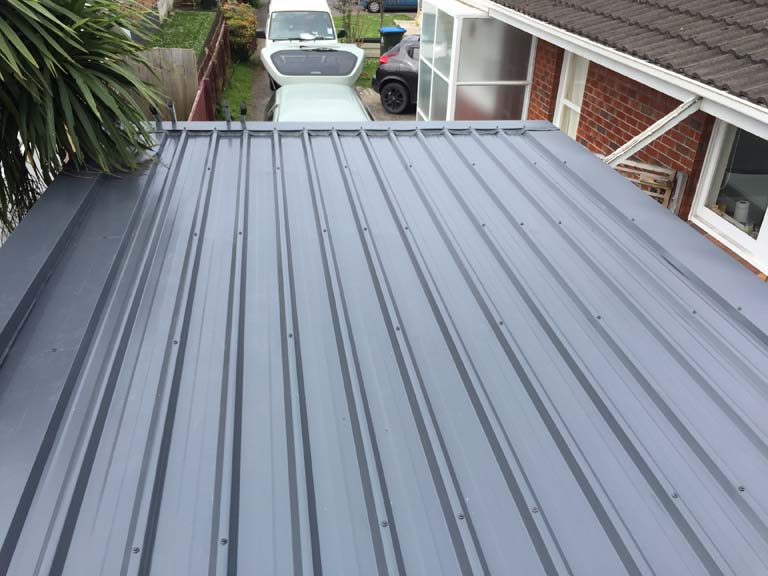Explore the types of corrugated metal, their pros, cons, and best uses. Find the ideal option for your project with Johnson Roofing’s expert guide.
Corrugated metal is one of the most versatile materials in modern construction. Whether used for roofing, wall cladding, or decorative accents, it offers durability, visual appeal, and functionality. Understanding the types of corrugated metal available can help you choose the perfect option for your project, balancing performance and aesthetics.
Types of Corrugated Metal
1. Galvanised Steel – Galvanised steel is the most traditional and widely used corrugated metal type. It’s made by coating steel with a protective layer of zinc, which helps prevent rust and corrosion.
| Pros | Cons | Best Applications |
| – Highly durable: Galvanised steel can withstand harsh weather conditions and heavy rainfall. – Affordable: It offers excellent value for money without compromising quality. – Low maintenance: With its zinc coating, it requires minimal upkeep over the years. | – It can rust over time if the coating wears off. – Not as flexible in design compared to newer materials like aluminium or colour-coated options. | Galvanised steel sheets are ideal for farm buildings, sheds, garages, and industrial roofs. Their strength and reliability make them the go-to option for rural and commercial structures needing long-term protection. |
2. Aluminium and Zincalume – Aluminium and Zincalume are modern alternatives gaining popularity for both residential and commercial use. These types of corrugated metal offer a sleek, contemporary look while being highly resistant to corrosion.
Advantages of Aluminium and Zincalume include:
• Lightweight: Easier to install and reduces the load on your building structure.
• Superior corrosion resistance: Perfect for coastal or humid environments where salt and moisture can be an issue.
• Energy efficiency: Reflective properties help keep buildings cooler, lowering energy costs.
• Design flexibility: Available in a variety of profiles and colours, making it easier to match architectural styles.
Drawbacks:
• Aluminium can be more expensive than galvanised steel.
• May dent more easily under impact due to its lighter weight.
Best applications: These materials are ideal for coastal homes, commercial buildings, and modern architectural projects that prioritise aesthetics and sustainability.
3. Colour-Coated and Stainless-Steel Options – For those wanting a stylish, long-lasting finish, colour-coated and stainless steel corrugated sheets are exceptional choices. They combine strength, beauty, and low maintenance in one package.
Key benefits:
• Customisable finishes: Available in a wide range of colours and textures to match your design vision.
• Corrosion resistance: Especially beneficial in high-moisture or industrial environments.
• Longevity: With proper installation and minimal maintenance, these sheets can last decades.
Possible downsides:
• Higher upfront costs compared to basic galvanised steel.
• May require professional installation to avoid scratching or damaging the finish.
Best applications: Perfect for residential roofing, façades, and commercial properties that require both aesthetic appeal and performance. The colour-coated finish can also increase your property’s curb appeal and long-term value.
Setting the Standard in Corrugated Metal Roofing with Johnson Roofing
At Johnson Roofing, we deliver premium roofing solutions that combine quality, durability, and style. With years of experience across New Zealand, our expert team provides trusted advice and exceptional workmanship. We supply and install a wide range of corrugated metal products, including galvanised steel, Zincalume, aluminium, and colour-coated panels, ensuring every project meets the highest standards on time and within budget.
Contact us today to learn more about our roofing services and discover how we can help bring your project to life with the perfect corrugated metal solution.
Related Blog Articles:
Corrugated Metal Roofing: A Homeowner’s Choice in Auckland
Corrugated Metal Roof Replacement: Top 3 Emerging Trends for Modern Homes

